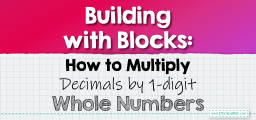How to Perform Scalar Multiplication
Scalar multiplication refers to the operation where each entry of a vector (or matrix) is multiplied by a fixed number, known as a scalar. Here are the fundamental points to understand about scalar multiplication:

Step-by-step Guide to Understand Scalar Multiplication
Here is a step-by-step guide to understand scalar multiplication:
Step 1: Establishing Preliminary Foundations
- Scalar Defined: At its core, a scalar is a singular quantity. In the realm of mathematics, it’s typically a real or complex number devoid of direction.
- Vector Reverie: A vector, in contrast, is a mathematical construct characterized by both magnitude and direction. This discussion ensues in a domain where these vectors might exist in multi-dimensional spaces.
Step 2: Introducing Scalar Multiplication
- Conceptual Underpinning: Scalar multiplication involves amplifying or diminishing a vector’s magnitude without directly altering its direction, unless the scalar is negative, which reverses the direction.
- Algebraic Gestalt: When you multiply a vector by a scalar, you’re proportionally scaling each of its components by that scalar.
Step 3: Delving into the Mechanics
- Vector Components: Dissect your vector into its constituent components. For a two-dimensional vector, this would appear as \(v=(x,y)\).
- Scalar Application: Multiply each of the vector’s components by the scalar.
Step 4: Exemplifying Through Algebraic Rigor
- Given: A vector \(v=(a,b)\) and a scalar \(k\).
- Scalar Multiplication Unveiled: The result of the scalar multiplication is a new vector \(kv\) whose components are \((ka, kb)\).
Step 5: Geometric Interpretations and Intricacies
- Magnitudinal Shift: In a geometric setting, scalar multiplication alters the length (magnitude) of the vector.
- Directional Nuance: A positive scalar maintains the vector’s original direction, while a negative scalar reverses it. A scalar of zero collapses the vector to the origin, resulting in the null or zero vector.
Step 6: Venturing Beyond Two Dimensions
- Transcendental Scalar Multiplication: In spaces beyond two dimensions, the process remains consistent. Each component of the vector is multiplied by the scalar, ensuring proportional scaling throughout all dimensions.
Step 7: Potential Pitfalls & Cognizant Resolutions
- Misconceptions: Scalar multiplication does not change the vector’s direction unless the scalar is negative. It’s essential to distinguish between vector magnitude alterations and directional shifts.
- Avoiding the Null Vector Trap: Multiplying a vector by a scalar of zero yields the zero vector, not the original vector. This nuance is pivotal in vector arithmetic.
Step 8: The Dance of Scalar Multiplication with Vector Operations
- Interplay with Vector Addition: Scalar multiplication distributes over vector addition. This property means that scaling the sum of two vectors is the same as summing their individually scaled versions.
Step 10: Concluding Reflections & Broader Applications
- Ubiquitous Presence: Scalar multiplication, though a basic operation, finds profound applications in physics, computer graphics, machine learning, and myriad areas where vectors lay the foundational framework.
By immersing oneself in the intricate dance of scalar multiplication, one gains not only mathematical prowess but also an appreciation for the scaled symmetries and harmonies that pervade both the abstract and tangible realms. Embrace this exploration, letting each scalar multiplication enrich your understanding of vectors and their myriad interactions.
Examples:
Example 1:
Given vector \(v=(4,−1)\) and scalar \(k=3\), find the vector \(kv\).
Solution:
\(kv=3(4,−1)=(3×4,3×(−1)) =(12,−3)\)
So, \(kv=(12,−3)\).
Example 2:
Given vector \(v=(−2,5)\) and scalar \(k=−2\), find the vector \(kv\).
Solution:
\(kv=−2(−2,5) =(−2×(−2),−2×5)=(4,−10)\)
So, \(kv=(4,−10)\).
Related to This Article
More math articles
- How to Find Errors in Number Patterns
- The Ultimate Geometry Course
- 8th Grade PSSA Math Worksheets: FREE & Printable
- How to Decode Decimal Division: Patterns Across Rising Place Values
- What Are the Applications of Inverse Trigonometric Functions?
- Top 10 Tips to Create a TSI Math Study Plan
- How to Use Area Models and the Distributive Property to Multiply?
- A Comprehensive Guide to the Properties of Continuity in Functions
- What Skills Do I Need for the ACT Math Test?
- How to Find Domain and Range of Relations























What people say about "How to Perform Scalar Multiplication - Effortless Math: We Help Students Learn to LOVE Mathematics"?
No one replied yet.